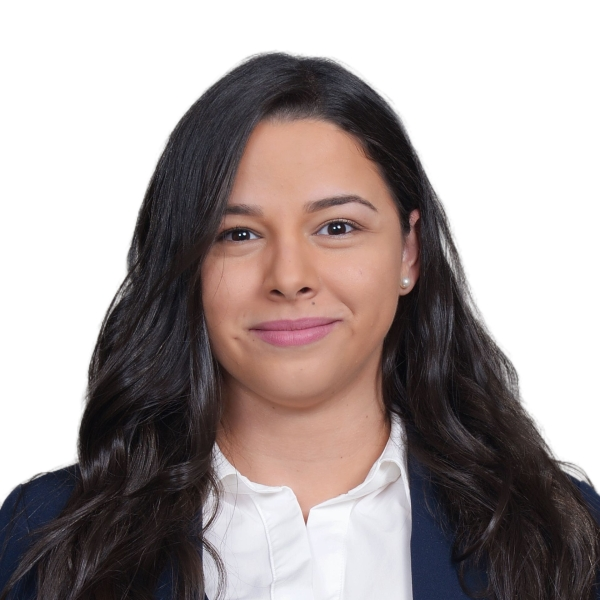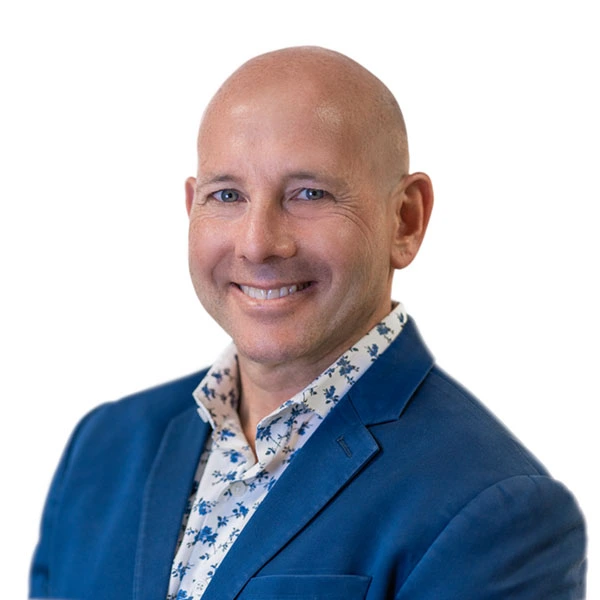Dual diagnosis is also known as co-occurring disorders and refers to the condition in which an individual suffers from both a mental health disorder and a substance use disorder (SUD).
In the case of dual diagnosis, one condition usually exacerbates the other, making treatment more complex.
Luckily, dual-diagnosis treatment centers specialize in providing integrated care that addresses both mental health and substance abuse simultaneously.
This article explores the unique challenges of dual diagnosis, the treatment approaches used in specialized centers, and the importance of addressing both conditions for a successful recovery.
Table Of Contents:
Key Information about Dual Diagnosis
Substance use disorders and mental health conditions frequently go hand-in-hand. In fact, research shows that approximately 50% of individuals with a mental illness will also experience a substance use disorder at some point in their lives, and vice versa.
The interaction between mental health disorders and substance use disorders makes it essential to treat both conditions simultaneously. If one condition is left untreated, the likelihood of relapse into addiction or worsening mental health symptoms increases.
Some of the most common co-occurring mental health conditions include:
| Mental Health Disorder | Most Common Drugs | Coping Mechanism |
|---|---|---|
| Depression | Alcohol, marijuana, prescription opioids. | Self-medication to alleviate sadness and hopelessness. |
| Anxiety disorders | Alcohol, benzodiazepines (e.g., Xanax), opioids. | To reduce feelings of worry, fear, and tension. |
| Bipolar disorder | Alcohol, cocaine, methamphetamine. | To control intense mood swings during manic or depressive episodes. |
| Post-traumatic stress disorder (PTSD) | Alcohol, opioids, marijuana. | To escape or numb the emotional pain of trauma. |
| Schizophrenia | Alcohol, marijuana, nicotine. | To manage hallucinations, delusions, and disordered thinking. |
Statistics on Dual Diagnosis
Research indicates that dual diagnosis is incredibly common. According to the Substance Abuse and Mental Health Services Administration (SAMHSA):
- 9.2 million adults in the United States had both a mental health disorder and a substance use disorder in 2018.
- Only 7.9% of individuals with dual diagnosis receive treatment for both conditions.
- Individuals with dual diagnosis are more likely to experience severe health complications, homelessness, legal issues, and unemployment if left untreated.
The Importance Of Dual Diagnosis Treatment
Dual-diagnosis treatment centers recognize that an integrated approach is necessary for successful recovery. By treating both disorders simultaneously, treatment centers provide a more comprehensive and holistic solution that reduces the risk of relapse and promotes long-term mental health stability.
A dual-diagnosis treatment plan involves:
-
Simultaneous treatment of both disorders:
Instead of focusing solely on addiction or mental health, both are treated together in a unified approach.
-
Collaboration between mental health and addiction specialists:
Professionals from both fields work together to create a cohesive treatment plan tailored to the individual’s needs.
-
Psychiatric care alongside addiction therapy:
Medication management and psychotherapy are combined with addiction recovery techniques like cognitive-behavioral therapy (CBT) and group counseling.
-
Long-term aftercare planning:
Continued support after the initial treatment is provided and helps to manage both mental health and substance use recovery, reducing the likelihood of relapse.
Components of Dual Diagnosis Treatment
Dual-diagnosis treatment centers provide comprehensive care that addresses both mental health and substance use disorders.
The foundation of treatment begins with a thorough assessment by a multidisciplinary team to accurately diagnose and create an individualized plan.
Drug detoxification is often a necessary first step for those with substance use disorders. Medication management also plays a crucial role, as patients may require medications for mental health conditions like depression or bipolar disorder alongside addiction treatments like naltrexone or buprenorphine to control cravings.
Psychotherapy is central to dual diagnosis treatment, with various therapeutic modalities such as Cognitive-Behavioral Therapy (CBT), Dialectical Behavior Therapy (DBT), and trauma-informed approaches like EMDR.
In addition to one-on-one therapy, group therapy offers peer support, while family therapy addresses the impact of co-occurring disorders on relationships, helping families heal and better support their loved one’s recovery.
Holistic therapies, including yoga, meditation, and nutrition counseling, complement traditional treatments by promoting overall well-being and helping manage stress and cravings.
Relapse prevention and aftercare planning are vital for long-term recovery, providing individuals with coping strategies and continued support through outpatient services, medication management, and support groups to maintain stability and prevent relapse.
| Treatment Component | Key Points |
|---|---|
| Comprehensive Assessment and Diagnosis | An individualized plan based on thorough mental health and substance use evaluation. |
| Detoxification | Safe elimination of substances under medical supervision, ensuring physical stability. |
| Medication Management | Careful use of medications for mental health and addiction treatment. |
| Psychotherapy and Counseling | CBT, DBT, and trauma-informed therapy address mental health and addiction. |
| Group Therapy | Peer support for managing co-occurring disorders. |
| Family Therapy | Rebuilding family relationships and providing education for ongoing support. |
| Holistic Therapies | Yoga, meditation, acupuncture, and nutrition counseling to promote overall well-being. |
| Relapse Prevention and Aftercare Planning | Coping strategies for long-term recovery, with outpatient and ongoing support. |
Dual Diagnosis Treatment Centers
There are several dual-diagnosis treatment centers around the country. Here are a few examples:
| Name | Location | Insurance Coverage |
|---|---|---|
| Legacy Healing Center | Margate, FL | Yes, insurance accepted |
| Legacy Healing Center | Fort Lauderdale, FL | Yes, insurance accepted |
| Legacy Healing Center | Cherry Hill, NJ | Yes, insurance accepted |
| Legacy Healing Center | Los Angeles, CA | Yes, insurance accepted |
| Pathways Treatment Center | Kalispell, MT | Yes, insurance accepted |
| Brookhaven Hospital | Tulsa, OK | Yes, insurance accepted |
| Christian Farms – Tree House | Temple, TX | Yes, insurance accepted |
| Eagleville Hospital | Eagleville, PA | Yes, insurance accepted |
Dual Diagnosis Treatment Costs
| Type of Treatment | Cost Range (USD) | Factors Influencing Cost |
|---|---|---|
| Inpatient (30-day program) | $5,000 – $30,000 | Location, duration, and services offered |
| Luxury Inpatient (30-day program) | $30,000 – $80,000 | Location, luxury amenities, personalized services |
| Outpatient (90-day program) | $1,000 – $10,000 | Program length, intensity, and insurance coverage |
Insurance Coverage
| Insurance Type | Coverage Details | Example Providers |
|---|---|---|
| Private Insurance | Covers inpatient, outpatient, detox, mental health counseling, and medication management. Varies by plan. | Aetna, Blue Cross Blue Shield, Cigna, UnitedHealthcare |
| Medicare | Covers mental health treatment, detox, and rehab if medically necessary. | Government-funded program for individuals over 65 or with disabilities |
| Medicaid | It covers inpatient and outpatient treatment for dual diagnosis but varies by state and facility. | State-funded program for low-income individuals varies by state |
| Out-of-Pocket Costs | Some centers offer sliding scale fees or financial assistance based on income if insurance only partially covers them. | Depending on the treatment center, co-pays and deductibles may apply |
Choosing a Treatment Center
When selecting a dual-diagnosis treatment center, it’s important to look for the following features:
Accreditation and Licensing
Ensure that the center is licensed and accredited by recognized organizations like The Joint Commission or CARF.
Qualified Staff
The treatment team should include both mental health and addiction specialists.
Individualized Care Plans
Treatment should be tailored to meet the unique needs of each patient rather than a one-size-fits-all approach.
Integrated Services
Ensure that the center offers simultaneous treatment for both mental health and addiction, including medication management, psychotherapy, and holistic therapies.
Dual Diagnosis Treatment for a Better Life
Dual-diagnosis treatment centers play a vital role in helping individuals with co-occurring mental health and substance use disorders achieve lasting recovery.
By offering integrated care that addresses both conditions, these centers provide a comprehensive approach that can improve mental health stability, reduce the risk of relapse, and enhance overall quality of life.
Whether through detox, therapy, medication management, or holistic treatments, dual-diagnosis treatment centers help individuals address the root causes of their conditions, ultimately supporting long-term recovery and well-being.
Frequently Asked Questions
Who needs dual diagnosis treatment?
Individuals who struggle with both a mental health disorder (such as depression, anxiety, PTSD, or schizophrenia) and substance use disorder require dual diagnosis treatment. It’s essential to treat both conditions simultaneously for effective recovery.
What types of therapies are used in dual diagnosis treatment?
Common therapies include Cognitive Behavioral Therapy (CBT), Dialectical Behavior Therapy (DBT), trauma-informed therapy, group therapy, and family therapy. Medications may also be used to manage mental health symptoms.
Does insurance cover dual diagnosis treatment?
Many insurance providers, including Aetna, Blue Cross Blue Shield, Cigna, and UnitedHealthcare, offer coverage for dual diagnosis treatment. However, coverage details vary by plan, and it’s essential to verify specific benefits with the provider.
How long does dual diagnosis treatment take?
The duration of treatment varies depending on individual needs and the severity of both the mental health disorder and substance use disorder. It can range from several weeks for intensive treatment to months for more comprehensive care plans.
Can I receive dual diagnosis treatment as an outpatient?
Yes, dual diagnosis treatment is available in outpatient settings, but it’s usually recommended for individuals with a stable living situation and a strong support system.
Is dual diagnosis treatment available for teens?
Yes, dual diagnosis treatment is available for teens, but it is usually tailored to their specific needs.
Adolescent programs often involve family therapy, age-appropriate counseling, and education on both mental health and substance use.
Treatment centers specializing in adolescent care recognize the developmental and social challenges that younger individuals face and adapt their therapies accordingly.
Hope Without Commitment
Find the best treatment options. Call our free and confidential helpline
Most private insurances accepted
Page Sources
- National Library of Medicine: What kind of science for dual diagnosis? A pragmatic examination of the enactive approach to psychiatry
- National Library of Medicine: Common Comorbidities with Substance Use Disorders Research Report
- SAMHSA: SAMHSA Announces National Survey on Drug Use and Health (NSDUH) Results Detailing Mental Illness and Substance Use Levels in 2021
- The Joint Commission: Search for Substance Use Disorder Treatment Providers
- National Library of Medicine: Prevalence of Dual Diagnoses among Children and Adolescents with Mental Health Conditions

 Authored by
Authored by  Reviewed by
Reviewed by 

